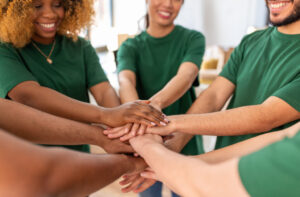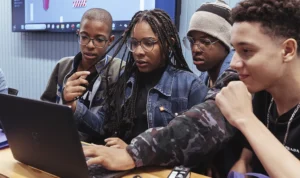Around 19 million adults in Brazil declare themselves asexual, lesbian, gay, bisexual or transgender (composing the acronym ALGBT), which corresponds to 12% of the country's population, reveals a unpublished study carried out by researchers from Unesp (Universidade Estadual Paulista) and USP (University of São Paulo).
For the first time this type of research is carried out in a Latin American country, reports the Unesp newspaper. The study, the result of post-doctoral work by psychiatrist Giancarlo Spizzirri, was carried out through 6,000 interviews conducted by the Datafolha Institute with people over 18 years old in 129 cities.
In 2019, the IBGE (Brazilian Institute of Geography and Statistics) did something similar in its first collection of data on sexual orientation in the country. In the survey, 1.8% of the adult population declared themselves homosexual or bisexual. However, the research did not include information about asexuality and gender identity, which involves categories such as trans and non-binary people.
In the Unesp and USP research, the questions were designed to avoid confusion and embarrassment that may arise with the terms of gender identification and sexual orientation. “Many people have difficulty admitting that they are homosexual. There are people who don't even know what this term is. Furthermore, there is also the issue of behavior. A person can behave in a certain way and not identify with the term that designates this category”, comments Giancarlo.
An example: survey interviewers asked questions like: “do you feel sexual attraction to…?”, the answers to which could be “men”, “women”, “men and women”, “men and sometimes women”, “women and sometimes men” or “I don’t feel sexual attraction”.
Regarding gender identity, the questioning began with the question “which of these options best describes how you feel?”. From there, the interviewers asked other questions, without the need to use terms like “transgender” or “non-binary”.
It is important to note, highlights Giancarlo, that the survey takes into account issues of sexual diversity and gender. “When we talk about diversity, we are not just referring to gender identity or sexual orientation, for example, but to practices and identities that deviate from binary and cis-hetero-normative standards”, he explains.
Asexual community
For Giancarlo, some results of the research are worth highlighting: the first is about the portion of the population categorized as asexual — equivalent to 5.76%, the highest percentage within the ALGBT community in the research.
The second highest percentage was bisexuals: 2,12%. Among the people interviewed, 1.37% said they were gay, 0.93% said they were lesbian and 0.68% identified themselves as transgender (another 1.18% corresponds to non-binary people).
Asexuality does not fit into either sexual orientation or gender identity: it remains in the field of diversity. According to Giancarlo, the group is invisible even in discussions within the ALGBT community.
“We live in a society that greatly worships image and sexuality, especially for young people. So, as eroticization is very present, I imagine that people tend to hide a way of experiencing sexuality that is distinct.”
Despite the large number of people classified as asexual, Giancarlo explains that another study would be needed to say with certainty whether they are all, in fact, with this identity.
Violence against ALGBT people
The second point that the researcher highlights is regarding violence: according to the research, trans people can suffer up to 25 times more episodes of sexual violence than hetero cisgender men.
“ALGBT people face worse living conditions and higher rates of violence. The group fights against socioeconomic inequality, stigma and discrimination. This has a negative effect on school and work, as well as access to health services. As a consequence, ALGBT individuals have higher rates of physical and mental health problems.”
According to the study, among the four types of violence surveyed, heterosexual and cisgender men are the ones who most reported suffering physical violence. Transgender people were those who most reported having suffered psychological violence, while non-binary individuals are those who suffer most from verbal violence.
Regarding sexual violence, the numbers are much more disparate: compared to the responses of cisgender straight men, cisgender straight women reported suffering four times more episodes of sexual violence, and asexual women, approximately five times more. Lesbian women reported six times more episodes of sexual violence and bisexual women, 12 times more.
Still compared to the responses of cisgender straight men, trans people reported 25 times more episodes of sexual assault. “On the one hand, we could assume that there would be relevant differences between the groups evaluated. But the magnitude of this difference regarding sexual violence is the most worrying”, comments Giancarlo.
What will be the next steps?
According to Maria Cristina Pereira Lima, director of FMB-Unesp, who also participated in the survey, research like this is very important to help remove ALGBT groups from invisibility and allow the development of public policies aimed at the specific needs of these people.
“When you don’t identify how many people belong to a certain group in the population, you make them invisible. This makes it difficult to establish public policies for this group, and to train professionals to meet their needs”, he explains.
Now, the researchers' expectation is that this work will serve as inspiration for more and more surveys on the ALGBT community to be carried out in the future. “These surveys are scientific in nature, but they also fulfill a political and social role”, explains Maria Cristina.


